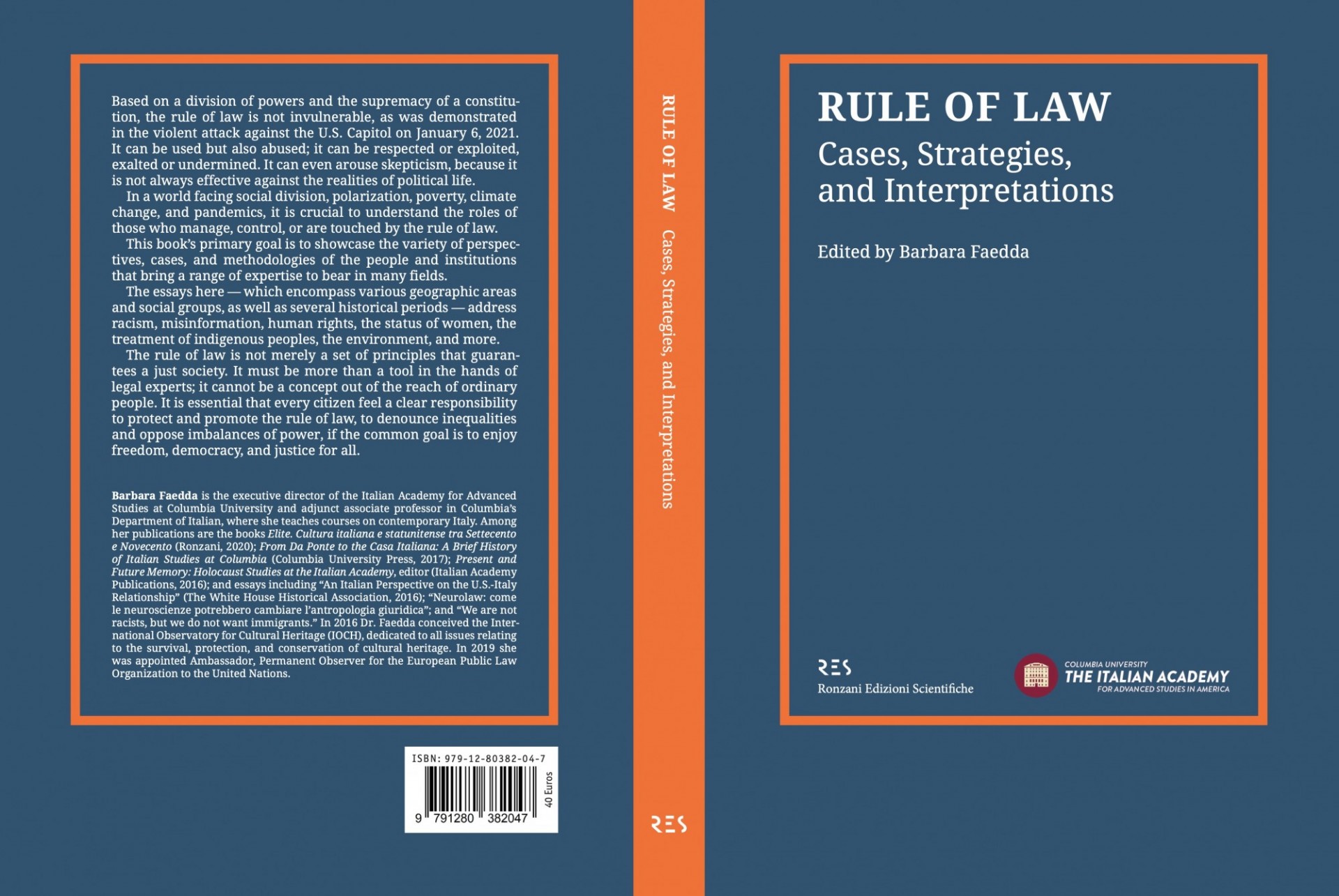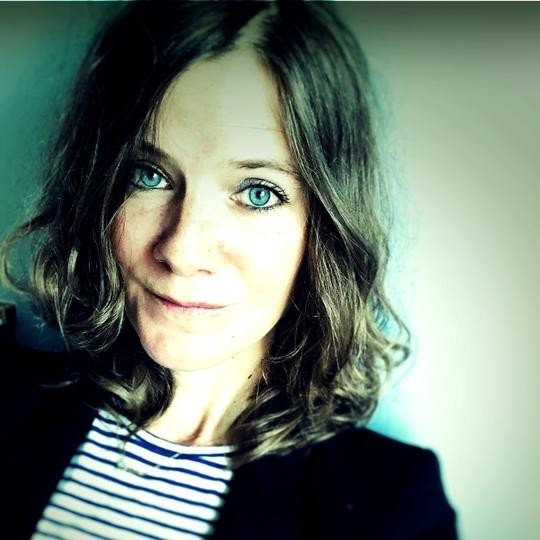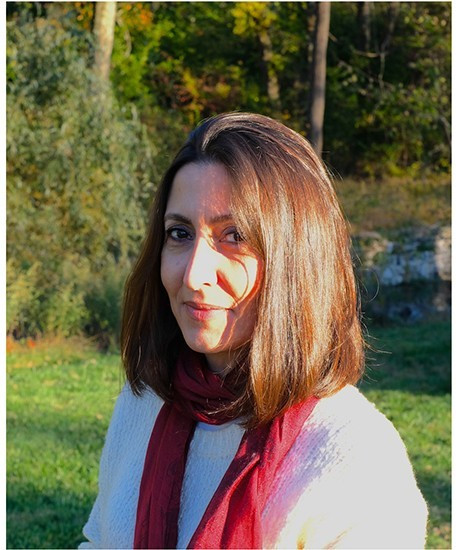The Academy supports research, seminars, and publications to look at law and its images, and at the relationship between law and nature in theory, philosophy, history, and religious thought.
Academy Fellows associated with this project include Carolin Behrmann, Manuela Bragagnolo, and Lidia Santarelli.
Among the conferences supported by the Academy in this area are Tales from the Legal Front Line: Philippe Sands in conversation with Monica Hakimi, People, Rule of Law, and Supreme Courts Now, Images, Bodies and Actions of the Law and Images of Shame. Infamy, Diffamation and the ethics of oeconomia.
The most recent publication in this area is Rule of Law: Cases, Strategies, and Interpretations, commissioned and edited by Barbara Faedda, the Academy's Executive Director, with essays that address racism, misinformation, human rights, the status of women, the treatment of indigenous peoples, the environment, and more. David Freedberg, the Academy's Director, contributed an essay on images, law, and the criminal body in the 16th century; the other authors (some of them former Academy Fellows) are Giuliano Amato, Bridgette Baldwin, John D. Bessler, Mary Bosworth, Marina Calloni, Maria Adele Carrai, Paolo Carta, Victoria Chenaut, Paul Craig, Jacques deLisle, Francesca Esposito, Andriani Fili, David Freedberg, Anna Elisabetta Galeotti, Paul Gowder, Kate Gunn, Antara Haldar, Stellina Jolly, Chelsey L. Kivland, Masao Kotani, Anna Loretoni, Bruce McIvor, Luca CM Melchionna, Hoolo ‘Nyane, Gianluigi Palombella, Irene Pasquetto, Jothie Rajah, Julio Ríos-Figueroa, Costanza Sciubba Caniglia, Gayatri Chakravorty Spivak, Kenneth Stow, and Maartje van der Woude.


Carolin Behrmann
Kunsthistorisches Institut in Florenz – Max-Planck-Institut (Italy)
Perceiving law: early modern normativity and the senses
2019-2020: Spring
Fellow for the Academy project “Law and its Manifestations”
Carolin Behrmann is an art historian focusing on political and legal visualities in early modern culture. She is directing the research project The Nomos of Images at the Kunsthistorisches Institut in Florenz, Max-Planck-Institute that investigates in multiple normative dimensions to understand how visuality and aesthetic experience actively take part in and shape juridical normativity, involving form, perception, action, and knowledge.
She has worked as a scientific collaborator at the Department for Art and Visual History at the Humboldt University of Berlin (2005-2011), has been a pre-doctoral fellow at the Getty Research Institute, Los Angeles (2008-2009), and a post-doctoral researcher at the KHI in Florence (2011-2014). In 2011 she completed her PhD Tyrant and Martyr. Images and the History of Ideas of the Law around 1600 (DeGruyter 2015) that explores the significance of the imagery of martyrdom in the context of the consolidation of statehood, law, and early globalization.
At the Academy she will be working on a book project addressing multiple aspects of a visual common sense and visual literacy with a focus on the 17th-18th century, that ultimately aims to address current debates around a “common sense” of visual literacy in the digital age.

Manuela Bragagnolo
Ecole Normale Supérieure de Lyon
Law, politics, and physiognomy from the 16th to the 18th centuries: a study of Giovanni Ingegneri’s works
2015-2016: Fall
Fellow for the Academy project “Law and its Manifestations”
Manuela Bragagnolo is a Post-doctoral Fellow at the Laboratoire d’Excellence COMOD (Constitution de la modernité) at the University of Lyon (2014-2015) and a member of the research lab Triangle, at the École Normale Supérieure, Lyon. She received her Ph.D in Legal Studies and History of Political Thought from the University of Trento in 2009. After her Ph.D studies she received grants for research from the École Normale Supérieure in Lyon and from the Institut d’Histoire de la Réformation in Geneva. She was Substitute Professor of Christian Latin Language and Culture at the University of Geneva and member of the academic staff of the Institut d’histoire de la Réformation (IHR)(2014-2015). She is member of EMoDIR (Research Group in Early Modern Religious Dissents and Radicalism) and of Laboratoire Italien‘s editorial staff. She is working on a book on the importance of Italian Renaissance culture in the 18th century, particularly in Lodovico Antonio Muratori’s legal, political and religious thought. Her fields of interest include history of legal, political and religious thought between the 16th and the 18th centuries, as well as history of medicine and physiognomy. Her project at the Italian Academy aims to investigate the links between law and physiognomy in Renaissance Italy.
Web page: https://ens-lyon.academia.edu/ManuelaBragagnolo
Working papers
Manuela Bragagnolo, Law, Physiognomy and Medicine in Sixteenth-Century Venice: The Case of Giovanni Ingegneri, Bishop of Capodistria († 1600), 2015-2016

Lidia Santarelli
Brown University
On the Fascist Discourse on Law as Art, Religion, and Science
2006-2007: Spring
Fellow Associate for the Academy project “Law and its Manifestations”
Working papers
Lidia Santarelli, History versus Memory? A Discussion on Italian War Crimes in World War II, 2006-2007